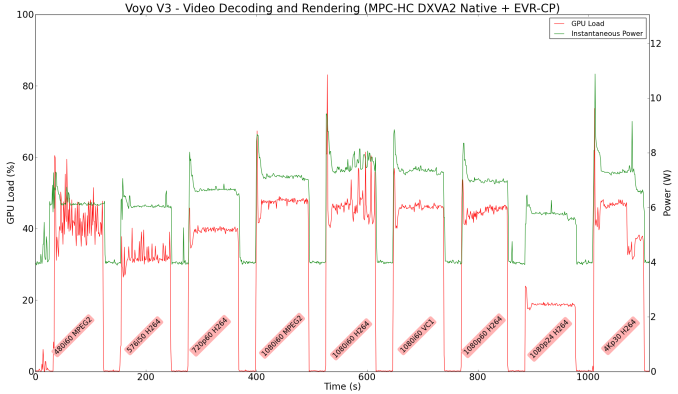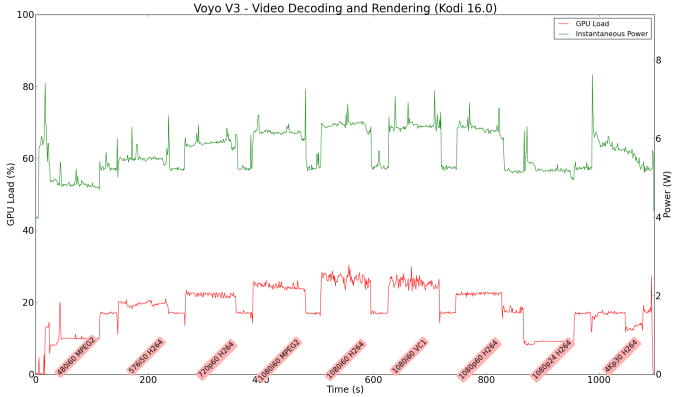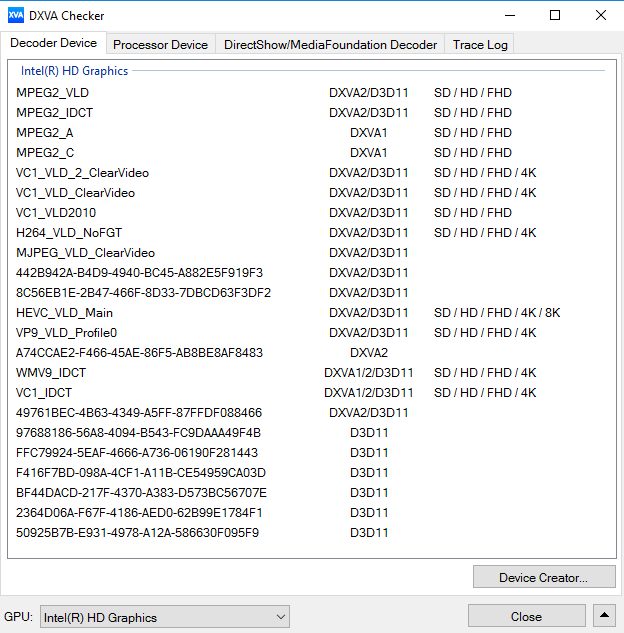Voyo V3 Review - A Fanless Intel Atom x7-Z8700 (Cherry Trail) mini-PC
by Ganesh T S on March 1, 2016 8:00 AM EST- Posted in
- Systems
- Intel
- Atom
- Passive Cooling
- Mini-PC
- Cherry Trail
HTPC Credentials
Given the Voyo V3's fanless nature and the presence of Intel HD Graphics, we expect many purchasers to use it as a media playback machine / HTPC. In fact, GearBest markets the Voyo V3 as a media player / mini-PC. It is obvious that we are not looking at a madVR capable machine, but one targeted at the entry-level / average HTPC user or someone looking for a HTPC to put in a second or third room (non-primary HTPC). There are two HTPC aspects that we will explore in this section, one related to network streaming (OTT services), and the other related to local file playback. Prior to that, we have a small sub-section dealing with refresh rate accuracy.
Refresh Rate Accurancy
Starting with Haswell, Intel, AMD and NVIDIA have been on par with respect to display refresh rate accuracy. The most important refresh rate for videophiles is obviously 23.976 Hz (the 23 Hz setting). Bay Trail didn't have problems with this refresh rate, and, as expected, the Cherry Trail-based Voyo V3 has no trouble with refreshing the display appropriately in this setting.
The gallery below presents some of the other refresh rates that we tested out. The first statistic in madVR's OSD indicates the display refresh rate.
Network Streaming Efficiency
Evaluation of OTT playback efficiency was done by playing back our standard YouTube test stream and five minutes from our standard Netflix test title. Using HTML5, the YouTube stream plays back a 1080p H.264 encoding. Since YouTube now defaults to HTML5 for video playback, we have stopped evaluating Adobe Flash acceleration. Note that only NVIDIA exposes GPU and VPU loads separately. Both Intel and AMD bundle the decoder load along with the GPU load. The following two graphs show the power consumption at the wall for playback of the HTML5 stream in Mozilla Firefox (v 44.0.1).

GPU load was around 45.32% for the YouTube HTML5 stream and 5.87% for the steady state 6 Mbps Netflix streaming case.
Netflix streaming evaluation was done using the Windows 10 Netflix app. Manual stream selection is available (Ctrl-Alt-Shift-S) and debug information / statistics can also be viewed (Ctrl-Alt-Shift-D). Statistics collected for the YouTube streaming experiment were also collected here.

Decoding and Rendering Benchmarks
In order to evaluate local file playback, we concentrate on EVR-CP with MPC-HC and Kodi 16.0. We already know that EVR works quite well even with the Intel IGP for our test streams. In our earlier reviews, we focused on presenting the GPU loading and power consumption at the wall in a table (with problematic streams in bold). Starting with the Broadwell NUC review, we decided to represent the GPU load and power consumption in a graph with dual Y-axes. Nine different test streams of 90 seconds each were played back with a gap of 30 seconds between each of them. The characteristics of each stream are annotated at the bottom of the graph. Note that the GPU usage is graphed in red and needs to be considered against the left axis, while the at-wall power consumption is graphed in green and needs to be considered against the right axis.
Frame drops are evident whenever the GPU load consistently stays above the 85 - 90% mark. The Broadwell-class GPU has no problems at all with any of our test streams (up to 4Kp30 H.264)
Power consumption at the wall was less than 8W even for the most stressful high frame-rate streams. GPU loading was also reasonable (as measured using GPU-Z)
Moving on to the codec support, the Gen8 LP 16 EU-version in the Atom x7-Z8700 is quite similar to that of the Atom x5-Z8300 in the Intel Compute Stick, DXVA Checker serves as a confirmation. The GPU includes decode support for HEVC Main Profile (8b) up to 8K resolution. Unfortunately, without the capability to drive a 4Kp60 display over HDMI, this is not suitable as a 4K HTPC (even though it can drive up to 4Kp30, thanks to the HDMI 1.4b port)




















69 Comments
View All Comments
Slawek - Tuesday, March 1, 2016 - link
I am not telling you to stop publishing PCMark 8, only to add Octane and Kraken. If published test says 'executed with Firefox 44' that is all information I need.Drumsticks - Wednesday, March 2, 2016 - link
Such a test wouldn't hold any value though. You can't make performance comparisons across generationswith different browsers. It might be useful to you but it's not a worthwhile test to run because there's no actual comparison to be made. A chart isn't worth making when outside variables can have a significant impact on the performance - is the 20% better performance of box A due to a 25% better browser engine/js performance? If so, that means the box is actually slower than the other comparison. And there's no way to know for sure where the benefit comes from.Samus - Tuesday, March 1, 2016 - link
It's hilarious seeing a shipping product not boot to OOBE. All they had to do was run a generalize SYSPREP and make a WIM image of the SSD...a process that hasn't changed since Windows Vista (a decade.)Doesn't this machines spec's qualify for Microsoft heavily subsidized/free Windows 10 Home license, or do they require a shipping storage capacity below 64GB SSD/4GB RAM?
ganeshts - Tuesday, March 1, 2016 - link
As I mentioned in another comment, it is likely that this unit does NOT qualify for the subsidized Win 10 install.I think the no-name Chinese manufacturers such as Voyo and Teclast need to step up the game - they have started shipping x86-based pre-built PCs only in the last couple of years, and they have lots to catch up on.
esterhasz - Thursday, March 3, 2016 - link
Apparently this activates, but only with a specific chinese version of windows (that can be set to English, though). Lon Seidman has a video on the issue on his channel.savagemike - Tuesday, March 1, 2016 - link
just as a point of interest if you check out Lon Seidman reviews on Youtube he has a couple videos reviewing this. He also had issues with the pre-installed Windows with UAC disabled. In the end he was able to install a Chinese version of Windows (from MS itself) which did activate OK. He did this on a tip from a viewer about a special program Microsoft has for Chinese manufacturers or something. The OS had an English language option for installation but he had to choose the Chinese version to make media from - from Microsoft.Confusing I know but watch Lon's videos.
I think his copy out of the box was already activated though if I recall.
Rlo - Tuesday, March 1, 2016 - link
"Allowing for the metallic segment to be on top to aid convective cooling would have definitely helped in making the thermal performance better."How about using this PC upside down? :)
ganeshts - Tuesday, March 1, 2016 - link
Can't fault that idea, but the aesthetics wouldn't be as nice as it is right now :)HugsNotDrugs - Wednesday, March 2, 2016 - link
There is a command line in Windows that allows you to export all system drives to a USB with one command. Makes fresh installs much easier. On mobile so can't link you, but Google it.HugsNotDrugs - Wednesday, March 2, 2016 - link
*drivers